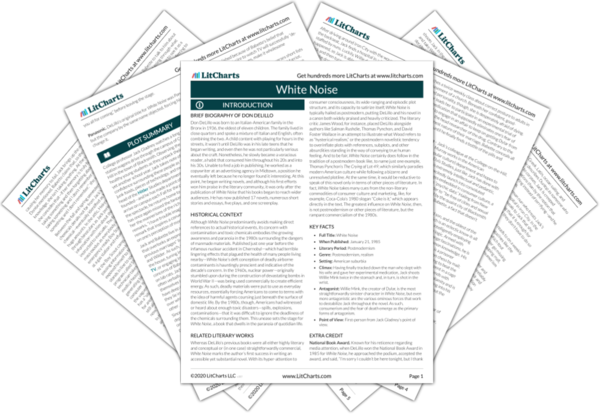Whereas DeLillo’s previous books were all either highly literary and conceptual or (in one case) straightforwardly commercial,
White Noise marks the author’s first success in writing an accessible yet substantial novel. With its hyper-attention to consumer consciousness, its wide-ranging and episodic plot structure, and its capacity to satirize itself,
White Noise is typically hailed as postmodern, putting DeLillo and his novel in a canon both widely praised and heavily criticized. The literary critic James Wood, for instance, placed DeLillo alongside authors like Salman Rushdie, Thomas Pynchon, and David Foster Wallace in an attempt to illustrate what Wood refers to as “hysterical realism,” or the postmodern novelistic tendency to overinflate plots with references, subplots, and other absurdities standing in the way of conveying true human feeling. And to be fair,
White Noise certainly does follow in the tradition of a postmodern book like, to name just one example, Thomas Pynchon’s
The Crying of Lot 49, which similarly parodies modern American culture while following a bizarre and unresolved plotline. At the same time, it would be reductive to speak of this novel only in terms of other pieces of literature. In fact,
White Noise takes many cues from the non-literary commodities of consumer culture and marketing, like, for example, Coca-Cola’s 1980 slogan “Coke is it,” which appears directly in the text. The greatest influence on
White Noise, then, is not postmodernism or other pieces of literature, but the rampant commercialism of the 1980s.
